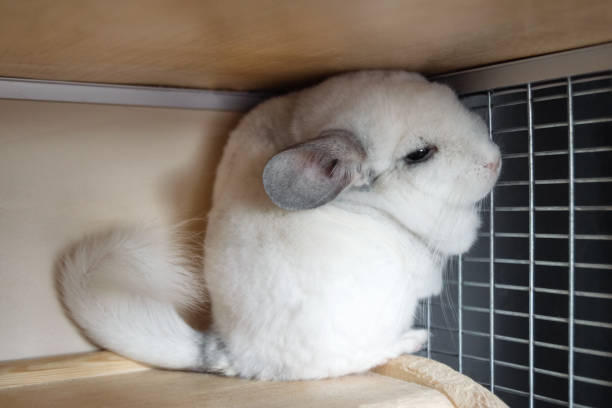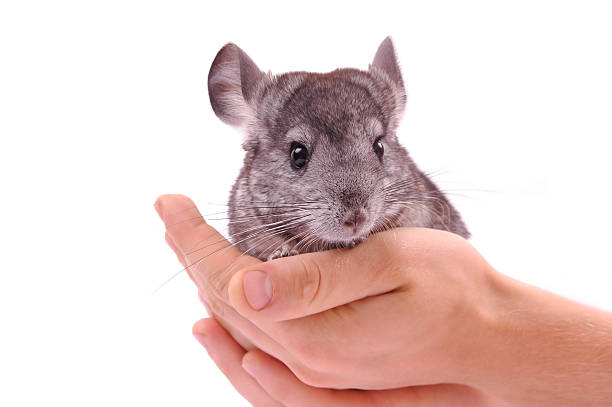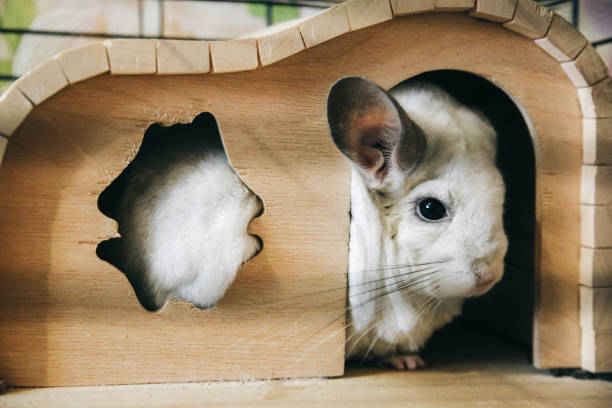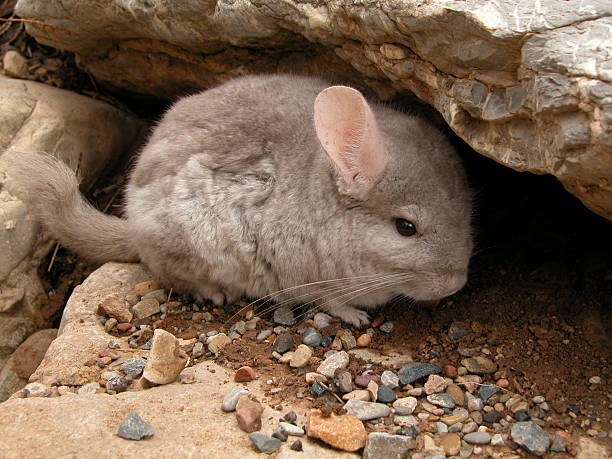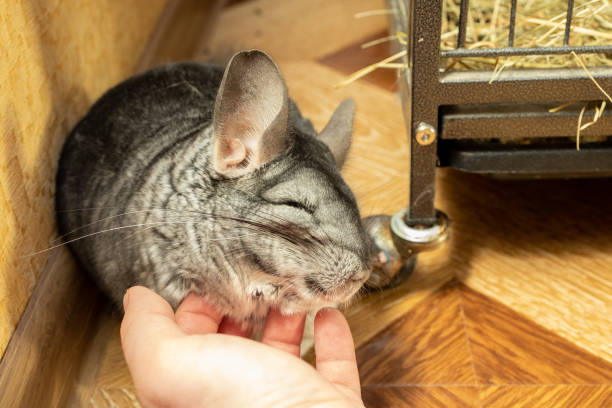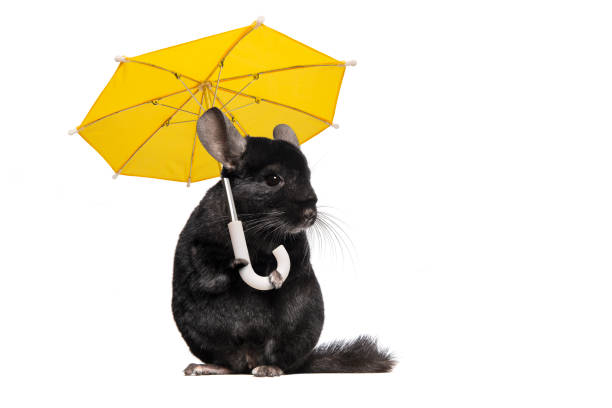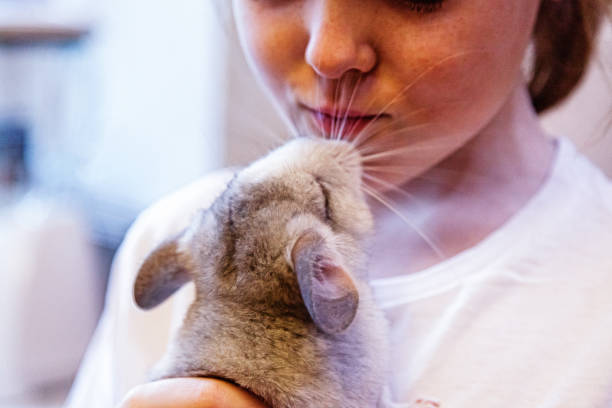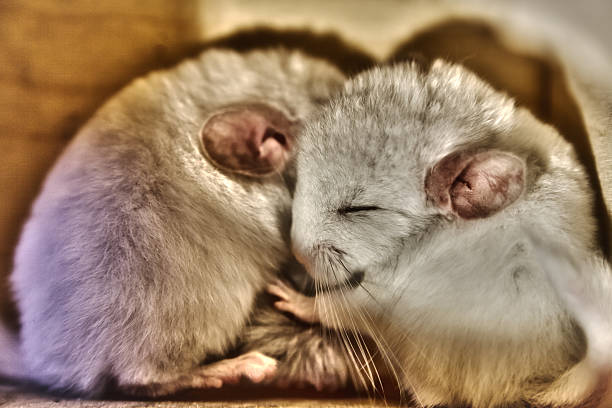The Wonderful World of Chinchillas: A Guide to Caring for Your Furry Friend
This post contains affiliate links. This means I will make a commission at no extra cost to you should you click through and make a purchase. Read the full disclosure here.Welcome to the captivating world of chinchillas! If you’re seeking a delightful and unique pet that’s both charming and endearing, then look no further. Chinchillas are extraordinary creatures that have stolen the hearts of many pet enthusiasts around the world. In this blog post, we’ll delve into the ins and outs of chinchilla care, shedding light on the joys and responsibilities that come with owning one of these furry companions.
Introducing chinchillas as pets
Chinchillas, scientifically known as Chinchilla lanigera, originally hail from the Andes Mountains in South America. Revered for their incredibly soft and velvety fur, these small rodents have been domesticated and cherished as pets for over a century. Their playful and curious nature, combined with their adorable appearance, makes them a popular choice for those looking to add a unique touch to their lives.
Chinchillas’ unique characteristics and charm
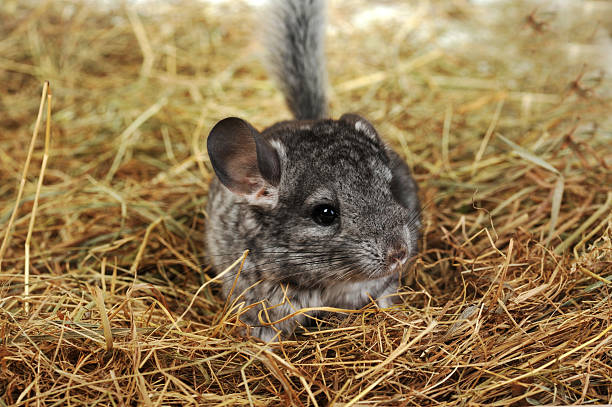
Chinchillas possess a myriad of fascinating traits that set them apart from other household pets. Their large, expressive eyes seem to convey a deep sense of intelligence, while their long, bushy tails add to their overall cuteness. One of their most captivating features is their luxurious fur, which is not only dense but also hypoallergenic, making them a great option for people with allergies.
Beyond their appearance, chinchillas have a spirited and active personality that can keep their human companions entertained for hours. They are known for their acrobatic skills and can jump up to six feet in the air with ease! Observing their playful antics and hearing their soft vocalizations can truly brighten any pet owner’s day.
The Fascinating World of Chinchillas
Overview of Chinchillas as a Species
Chinchillas belong to the rodent family and are closely related to guinea pigs and porcupines. Their scientific name, Chinchilla lanigera, translates to “little chinchilla with wool.” In their natural habitat of the Andes Mountains, chinchillas thrive in cool, dry climates with altitudes ranging from 9,800 to 16,400 feet (3,000 to 5,000 meters). Due to their unique adaptation to this harsh environment, they have some distinct characteristics that make them intriguing pets.
In the wild, chinchillas are social animals, living in colonies of up to 100 individuals. They are primarily crepuscular, which means they are most active during dawn and dusk, using the cooler temperatures to forage for food and engage in playful activities.
History and Origin of Chinchillas as Pets
Chinchillas have a fascinating history with humans. These adorable rodents were first discovered by Westerners in the 16th century during Spanish expeditions to South America. Their exceptionally soft and dense fur quickly attracted the attention of traders, leading to an unfortunate era of hunting that brought chinchillas to the brink of extinction.
Fortunately, concerned conservationists and the establishment of protective measures helped rescue the species from the verge of extinction. In the early 20th century, chinchillas were introduced to the United States, where they were bred for their fur. As awareness grew about the plight of wild chinchillas, their popularity as pets increased, leading to a rise in domestic breeding and a decline in their use for fur production.
Today, chinchillas are primarily bred and kept as pets, with their wild populations remaining protected in their natural habitats.
Different Chinchilla Species and Their Differences
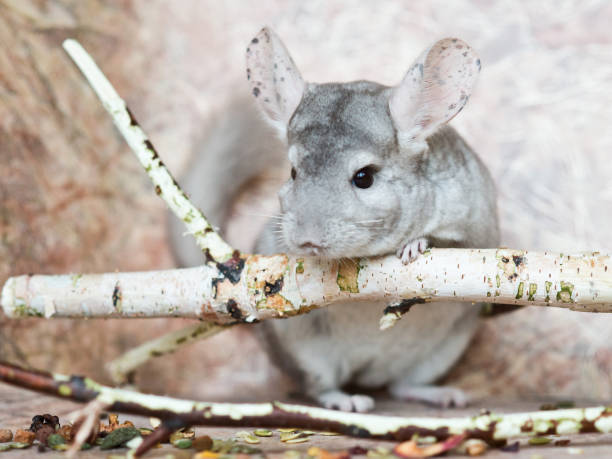
While there are several species of chinchillas, the two most commonly kept as pets are the Chinchilla lanigera and the Chinchilla brevicaudata. The Chinchilla lanigera is more prevalent and widely kept as a pet due to its docile nature and availability in various colors and patterns.
The Chinchilla brevicaudata, also known as the short-tailed chinchilla, is less common and has a stockier build with a shorter tail compared to its long-tailed cousin. Though still kept as pets by some enthusiasts, this species requires more specialized care due to its specific habitat requirements.
As pets, both species share similar care needs, but it’s essential to identify the specific species when acquiring a chinchilla, especially if you plan to adopt from a breeder or a reputable pet store.
Deciding to Get a Chinchilla
Bringing a chinchilla into your home is an exciting decision, but it’s essential to consider several factors before making the commitment. Chinchillas have a lifespan of around 15 to 20 years, and they require a considerable amount of care and attention throughout their lives. Here are some crucial considerations to keep in mind before welcoming a chinchilla as your new furry companion:
Time Commitment and Lifespan
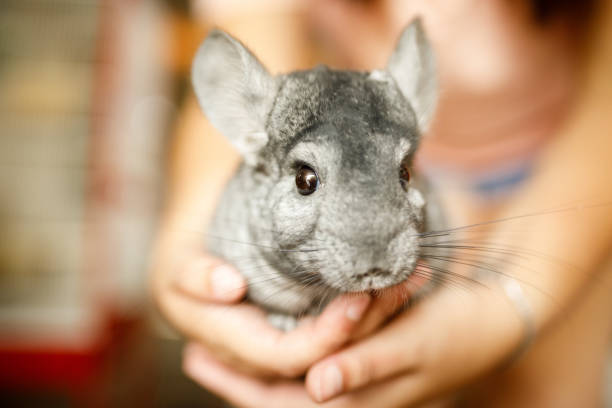
Owning a chinchilla is a long-term commitment. As mentioned, these charming rodents can live for well over a decade, and some have been known to reach their early 20s with proper care. You’ll be responsible for their well-being, health, and happiness for many years to come. Consider your current lifestyle and future plans to ensure you can provide a stable and loving environment for your chinchilla throughout its life.
Financial Responsibilities
Chinchillas may be small, but caring for them involves some financial considerations. The initial setup costs for a chinchilla can include purchasing a suitable cage, bedding, toys, and other essential supplies. Additionally, you’ll need to budget for ongoing expenses, such as quality food, hay, treats, and regular veterinary check-ups. Be prepared for unexpected medical expenses, as even the healthiest chinchillas may require veterinary care at some point.
Interaction and Social Needs
Chinchillas are intelligent and social animals that thrive on companionship and interaction. While they may not be as demanding as some other pets, they still need daily interaction, mental stimulation, and playtime to stay happy and content. Consider whether you have enough time to dedicate to your chinchilla’s needs and whether you can provide a stimulating environment for them, especially if you plan to keep a single chinchilla.
Research and Learning
Before bringing a chinchilla home, it’s crucial to educate yourself about their specific care requirements. Read books, browse reputable online sources, and consult experienced chinchilla owners to gain insights into their dietary needs, grooming, behavior, and potential health issues. Knowledge is the key to providing the best possible care for your new pet.
Allergies and Health Concerns
While chinchillas are generally considered hypoallergenic, some individuals may still experience allergies to their fur or dander. Spend time with chinchillas, if possible, before deciding to bring one home, to ensure you do not have any adverse reactions. Additionally, consider the health of all members of your household, as chinchillas can carry certain zoonotic diseases that can affect humans.
Commitment to Responsible Pet Ownership
Owning a chinchilla, or any pet for that matter, comes with the responsibility of providing proper care, attention, and love. Chinchillas are intelligent creatures with distinct needs, and they deserve a nurturing and enriching environment to thrive. Before making the decision, assess your dedication to being a responsible pet owner and ensure that you’re ready for the commitment involved.
Preparing Your Home for a Chinchilla
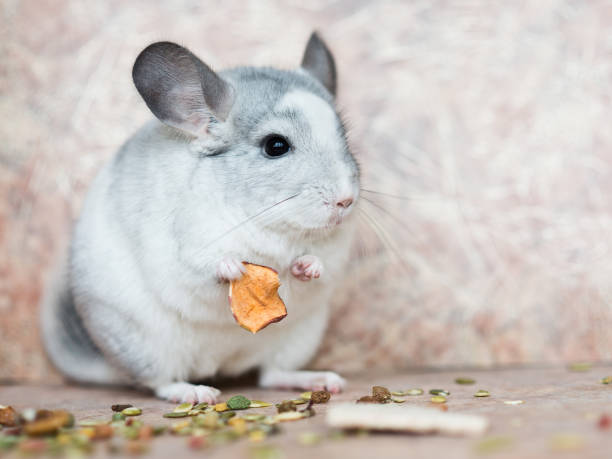
Creating a suitable and enriching habitat for your chinchilla is essential to ensure their well-being and happiness. Chinchillas have specific needs and preferences, so providing them with the right environment is crucial for their physical and mental health. Let’s explore the steps to set up the ideal chinchilla home:
Setting up the Ideal Chinchilla Habitat
- Selecting the Right Cage: Invest in a spacious cage that allows your chinchilla to move around, jump, and exercise. A multi-level cage with ramps and platforms is ideal for providing vertical space. Avoid cages with wire flooring, as they can cause foot and limb injuries. Opt for solid surfaces or use platforms covered with safe materials like fleece or wood.
- Bedding and Nesting Materials: Line the cage with appropriate bedding to absorb moisture and provide comfort. Aspen wood shavings or paper-based bedding are good choices. Avoid using cedar or pine shavings, as their strong odors can be harmful to chinchillas. Provide nesting material like hay or shredded paper for your chinchilla to build cozy nests.
- Exercise and Playtime: Chinchillas are active animals and need plenty of opportunities for exercise. Set up an exercise wheel suitable for chinchillas, as well as various toys and climbing structures to keep them entertained and physically engaged.
Safety Precautions and Chinchilla-Proofing Your Home
- Chew-Proof Environment: Chinchillas have continuously growing teeth and a natural urge to chew. Ensure that all items within their reach are safe and non-toxic. Chinchilla-proof your home by removing electrical cords, toxic plants, and any potentially hazardous objects.
- Temperature and Lighting: Chinchillas are sensitive to high temperatures and direct sunlight. Keep their cage in a cool, well-ventilated area away from drafts, heaters, or air conditioners. Provide indirect natural light or use a full-spectrum light to mimic natural daylight.
- Escape-Proof Cage: Chinchillas are agile and excellent jumpers. Ensure the cage has secure locks on all doors and access points to prevent escape.
Creating a Comfortable Environment for Your Furry Friend
- Hide Boxes and Huts: Chinchillas appreciate a sense of security, so provide hide boxes or huts where they can retreat and relax.
- Water and Food Bowls: Use heavy, tip-proof dishes for water and food to prevent spillage and contamination.
- Chew Toys: Offer a variety of safe chew toys made from untreated wood or chinchilla-safe materials. This will help satisfy their chewing instincts and keep their teeth healthy.
- Dust Bath Area: Chinchillas need regular dust baths to keep their fur clean and healthy. Provide a shallow container filled with chinchilla dust for them to roll in, as this is an essential part of their grooming routine.
Remember, chinchillas are social animals and enjoy interaction with their human caregivers. Spend time bonding with your chinchilla through gentle handling and playtime. However, be patient and allow them to approach you at their own pace, as some chinchillas may take time to warm up to new people.
The Essential Care Guide
Caring for your chinchilla involves providing them with a balanced diet, maintaining proper hygiene, and ensuring their overall health and happiness. In this section, we’ll cover the essential aspects of chinchilla care to keep your furry friend in top condition.
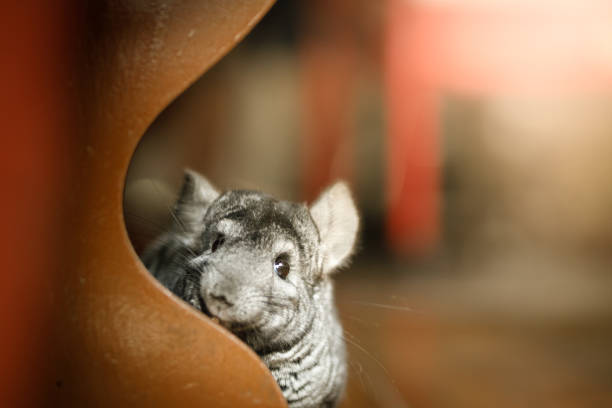
Feeding Your Chinchilla
- Hay is the Foundation: Hay is the primary component of a chinchilla’s diet and should be available at all times. High-quality timothy hay is recommended, as it promotes healthy digestion and helps wear down their continuously growing teeth.
- Pellets for Nutrition: Offer high-quality chinchilla pellets, which are specially formulated to meet their nutritional needs. Avoid mixes that contain seeds, nuts, or dried fruit, as they can lead to health issues. Pellets should make up a smaller portion of their diet compared to hay.
- Treats in Moderation: Chinchillas enjoy treats like dried fruits or vegetables, but these should be given sparingly due to their high sugar content. Stick to small portions as occasional rewards for good behavior.
- Fresh Water: Provide your chinchilla with fresh, clean water every day. Use a sipper bottle to prevent water from spilling and becoming contaminated.
Maintaining Proper Hygiene
- Bathing and Dust Baths: Chinchillas do not bathe in water like other animals. Instead, they need regular dust baths to keep their fur clean and free from excess oils. Offer a dust bath 2-3 times a week, and remove it after 15-20 minutes to avoid excessive dryness.
- Grooming and Handling: Chinchillas are excellent groomers themselves, but you can help by gently brushing them with a soft, chinchilla-specific brush. Handle your chinchilla with care and always support their hindquarters to prevent injuries.
Veterinary Care and Health Concerns
- Regular Check-ups: Schedule regular visits to an exotic pet veterinarian who is experienced with chinchillas. Annual check-ups can help detect any potential health issues early.
- Signs of a Healthy Chinchilla: Monitor your chinchilla’s behavior, appetite, and appearance. A healthy chinchilla should have bright, clear eyes, a clean coat, and be active and alert.
- Health Issues to Watch for: Keep an eye out for signs of dental problems, respiratory issues, gastrointestinal disturbances, and any changes in behavior or appetite. If you notice any concerning symptoms, seek veterinary attention promptly.
Proper nutrition and environmental enrichment are vital to your chinchilla’s overall well-being. Offer them a variety of toys, tunnels, and activities to keep them mentally stimulated and physically active.
Understanding Chinchilla Behavior
- Social Behavior and Bonding: Chinchillas are social animals and can thrive with the company of another chinchilla. If you have a single chinchilla, be prepared to provide extra attention and interaction to compensate for the lack of a companion.
- Nocturnal Nature and Sleep Habits: Chinchillas are nocturnal, meaning they are most active during the night. Provide a quiet environment during the day to ensure they get adequate rest.
- Vocalizations and Communication Cues: Chinchillas communicate through various vocalizations, including barks, chirps, and purrs. Pay attention to their sounds and body language to better understand their moods and needs.
By providing proper care and attention, your chinchilla will live a happy and healthy life.
Enrichment and Toys
Enriching your chinchilla’s environment is essential for their mental stimulation and overall well-being. Chinchillas are curious and intelligent creatures that thrive when provided with various activities and toys to keep them engaged. Here are some enrichment ideas and toy recommendations to make your chinchilla’s life even more enjoyable:
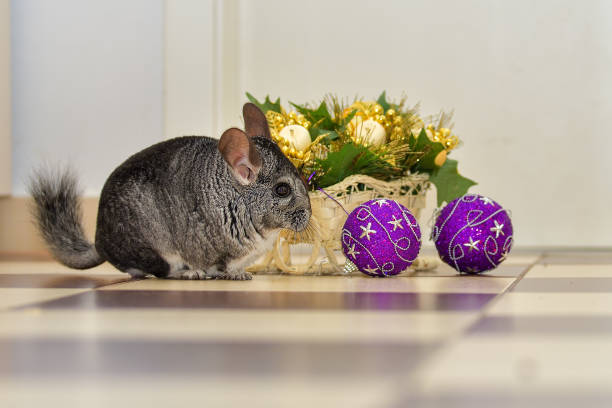
The Importance of Mental and Physical Stimulation
- Preventing Boredom: Chinchillas are active by nature and can become bored if they lack mental and physical stimulation. Boredom can lead to undesirable behaviors and stress.
- Exercise and Playtime: Allow your chinchilla daily supervised playtime outside their cage in a chinchilla-proofed area. Chinchillas enjoy exploring, jumping, and running, which are essential for their physical health and mental well-being.
- Rotate Toys: Introduce a variety of toys and rotate them regularly to maintain your chinchilla’s interest. New toys and activities keep them engaged and prevent them from getting bored with their environment.
Recommended Toys and Playtime Activities
- Chew Toys: Chinchillas have a natural need to chew to wear down their teeth. Provide safe chew toys made from untreated wood, applewood sticks, or pumice stones. Avoid plastic or toys with small parts that could be swallowed.
- Exercise Wheels: Chinchilla-specific exercise wheels are a fantastic addition to their cage. Choose a solid-surface wheel to prevent foot injuries, and ensure it is appropriately sized for your chinchilla.
- Tunnels and Hideouts: Chinchillas love to explore and hide in tunnels. Offer them various tunnels and hideouts made from safe materials like cardboard or wooden logs.
- Wooden Platforms and Ledges: Install wooden platforms and ledges at different levels in the cage to provide opportunities for climbing and jumping.
- Woven Grass Mats: Chinchillas enjoy sitting and playing on woven grass mats. These mats also double as comfortable bedding for them to rest on.
- Puzzle Feeders: Challenge your chinchilla’s problem-solving skills with puzzle feeders that dispense treats as they figure them out.
DIY Toy Ideas to Keep Your Chinchilla Entertained
- Cardboard Castle: Create a castle using non-toxic cardboard boxes. Cut holes for doorways and windows, and let your chinchilla explore their new fortress.
- Hay Ball: Fill a small, sturdy ball with fresh hay, and watch your chinchilla roll it around to forage for their favorite food.
- Paper Roll Treat Holder: Stuff a cardboard paper towel or toilet paper roll with hay and treats to provide your chinchilla with a fun challenge.
Remember to inspect all toys regularly for signs of wear or damage and replace them as needed. Safety should always be a priority when offering toys to your chinchilla.
Enrichment and playtime with your chinchilla will not only foster a stronger bond between you but also contribute to their overall health and happiness.
Common Challenges in Chinchilla Care
While chinchillas are relatively hardy pets, they can face certain challenges that require prompt attention and care. Being aware of these common issues will help you be prepared to address them effectively. Let’s explore some potential challenges and how to handle them:
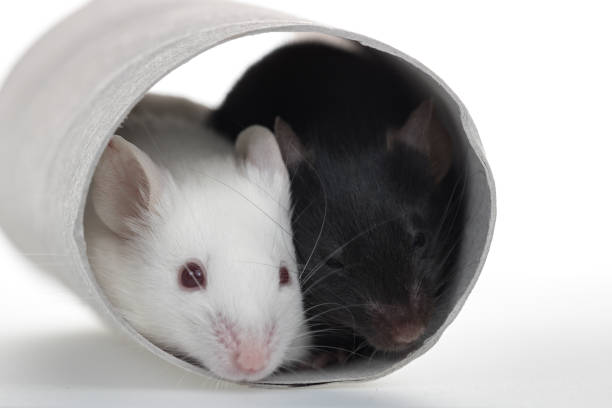
Handling Aggression and Stress
- Territorial Behavior: Chinchillas can be territorial, especially when introduced to a new environment or when sharing space with other chinchillas. Slowly introduce them to new surroundings and monitor their behavior during social interactions.
- Stress Triggers: Chinchillas are sensitive animals and can become stressed due to sudden changes, loud noises, or excessive handling. Create a calm and consistent environment for them to minimize stress.
- Signs of Aggression: Watch for signs of aggression, such as aggressive vocalizations, lunging, or biting. If you notice aggressive behavior, consult an experienced chinchilla owner or a veterinarian for guidance on behavior modification techniques.
Dealing with Dental Issues and Other Health Concerns
- Dental Problems: Chinchillas’ teeth grow continuously, and improper wear can lead to dental issues. Provide appropriate chew toys, a hay-based diet, and schedule regular dental check-ups with an experienced exotic pet veterinarian.
- Respiratory Infections: Chinchillas can be susceptible to respiratory infections, especially in environments with high humidity or poor ventilation. Keep their living area clean, dry, and well-ventilated to prevent respiratory issues.
- Gastrointestinal Troubles: Chinchillas have sensitive digestive systems. Ensure they have a consistent and appropriate diet to prevent digestive upsets. If you notice any changes in appetite, stool consistency, or behavior, seek veterinary advice promptly.
Addressing Behavioral Problems
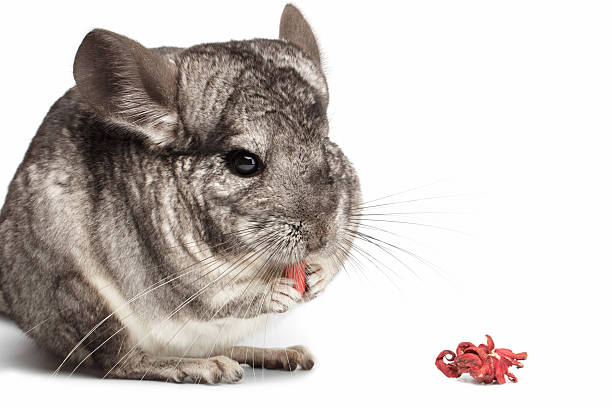
- Chewing and Destructive Behavior: Chinchillas have an innate need to chew, but excessive chewing on cage bars or other items can lead to dental problems. Offer plenty of safe chew toys and provide ample out-of-cage playtime to reduce destructive behavior.
- Cage Aggression: If you encounter cage aggression (aggression when reaching into or cleaning the cage), try using a cloth to gently scoop them up or entice them to come out on their own. Avoid grabbing them by the scruff, as this can cause injury.
Seeking Veterinary Care
If you observe any concerning changes in your chinchilla’s behavior, appetite, or overall well-being, it’s crucial to consult a veterinarian experienced in chinchilla care. Regular veterinary check-ups are essential for maintaining your chinchilla’s health and catching any potential issues early.
Remember, each chinchilla is an individual, and their needs and behaviors may vary. Patience, consistent care, and understanding their unique personalities will help you navigate any challenges that arise as a chinchilla owner.
Chinchilla Breeding and Reproduction
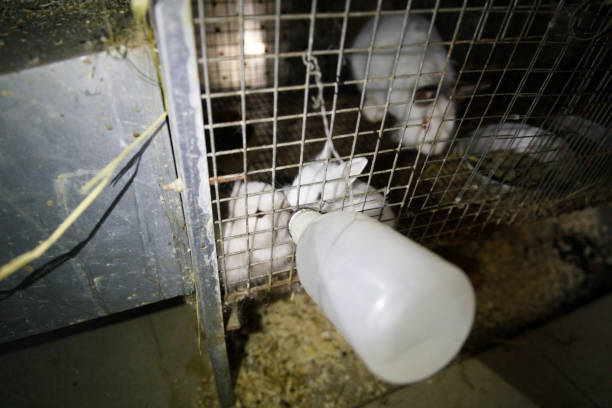
Breeding chinchillas requires careful consideration and responsibility. While the idea of adorable chinchilla babies may be tempting, it’s essential to understand the complexities and challenges of chinchilla breeding. If you’re contemplating breeding your chinchillas or adding chinchilla pups to your family, here are some important points to consider:
Understanding Chinchilla Breeding Behaviors
- Maturity: Chinchillas reach sexual maturity around 8 to 12 months of age, but it’s best to wait until they are at least 1 year old before considering breeding. Breeding them too early can lead to health risks for the mother and the offspring.
- Pairing: Chinchillas are social animals and usually do well with a companion. However, not all chinchillas get along. Properly introduce potential breeding pairs and monitor their interactions carefully to ensure compatibility.
- Gestation Period: Chinchilla gestation typically lasts around 111 days, or approximately 3.5 months.
Responsible Breeding Practices and Considerations
- Health Screening: Before breeding, both male and female chinchillas should undergo a thorough health examination by an experienced exotic pet veterinarian. Only healthy chinchillas should be considered for breeding to ensure the well-being of the parents and offspring.
- Breeding Seasons: Chinchillas are induced ovulators, which means they don’t have a regular estrus cycle. However, they can breed throughout the year. It’s essential to understand their reproductive behaviors and avoid overbreeding, as it can be physically taxing on the female.
- Caring for Chinchilla Pups: Chinchilla mothers usually take good care of their young, but be prepared to provide extra support if needed. Separate the male from the female and the pups during the birthing process and the early stages of the pups’ development to prevent unwanted pregnancies.
Considerations for Chinchilla Pups
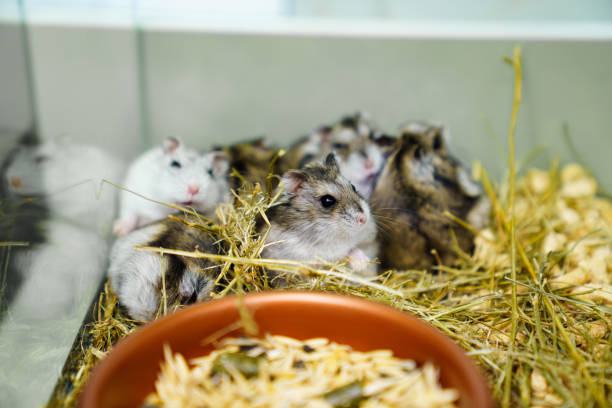
- Weaning: Chinchilla pups should stay with their mother for at least 6 to 8 weeks to nurse and learn essential social behaviors. Separating them too early can lead to health and behavioral issues.
- Socialization: Once they are weaned, chinchilla pups benefit from socialization with their human caregivers. Spend time handling and interacting with them to ensure they grow up to be well-adjusted and friendly pets.
- Finding Responsible Homes: If you have chinchilla pups that you cannot care for or keep, it’s crucial to find responsible and educated homes for them. Make sure potential adopters have the knowledge and resources to provide proper care for these unique pets.
Breeding chinchillas is a significant responsibility that requires knowledge, dedication, and a commitment to the well-being of the animals involved. If you are not prepared to handle the responsibilities and potential challenges of breeding, it is best to avoid it altogether.
Traveling with Your Chinchilla
Traveling with your chinchilla can be an exciting experience, but it requires careful planning and consideration to ensure their comfort and safety. Whether you’re going on a short trip or embarking on a longer vacation, here are some essential tips for traveling with your furry friend:
Preparing for Short Trips and Outings
- Travel Carrier: Invest in a secure and well-ventilated travel carrier specifically designed for small animals. Ensure the carrier has enough space for your chinchilla to move comfortably and that it’s escape-proof.
- Familiarize Your Chinchilla: Allow your chinchilla to become familiar with the carrier before the trip. Place treats and some bedding inside to encourage them to explore and associate the carrier with positive experiences.
- Keep Them Calm: Cover the carrier with a lightweight cloth or towel during the journey to create a sense of security and reduce stress.
- Limit Travel Time: Keep travel time to a minimum, as chinchillas can become stressed during prolonged trips. Avoid exposing them to extreme temperatures or direct sunlight.
- Hydration and Food: Provide access to fresh water during the journey and offer some hay or treats to keep them occupied and prevent boredom.
Traveling with Your Chinchilla for an Extended Period
- Accommodation: If you plan to stay at a hotel or a friend’s house, ensure they are aware of your chinchilla’s presence and that pets are allowed in the accommodation.
- Chinchilla-Proof the Area: Chinchillas love to explore, and hotel rooms or unfamiliar environments can have hidden dangers. Chinchilla-proof the area by removing any potential hazards, securing electrical cords, and blocking small spaces where your chinchilla could hide.
- Maintain Their Routine: Try to stick to your chinchilla’s regular schedule for feeding, playtime, and dust baths as closely as possible to provide a sense of familiarity.
- Bringing Their Habitat: If possible, bring a small section of their regular cage or some familiar bedding to create a more comfortable and familiar environment for them.
Considerations for Air Travel
- Research Airline Policies: If you plan to travel by air, check the airline’s pet travel policies and regulations for transporting small animals. Some airlines allow chinchillas in the cabin, while others require them to travel as cargo.
- Health Certificate: Obtain a health certificate from an experienced exotic pet veterinarian stating that your chinchilla is healthy and fit for travel. Some airlines may require this documentation.
- Acclimation to Carrier: Just like for short trips, acclimate your chinchilla to their travel carrier beforehand to reduce stress during air travel.
Seek Professional Advice
If you have any concerns or uncertainties about traveling with your chinchilla, consult an experienced veterinarian or chinchilla expert for guidance. They can provide tailored advice based on your chinchilla’s individual needs and circumstances.
By taking the necessary precautions and ensuring your chinchilla’s comfort and well-being, you can enjoy your travels together and create lasting memories with your furry companion.
Final Thoughts
Chinchillas are truly remarkable pets, known for their charming personalities, luxurious fur, and acrobatic antics. As with any pet, responsible ownership is crucial to ensure they lead happy, healthy lives in your care.
Chinchillas Care FAQs
Are chinchillas good pets?
Chinchillas can make excellent pets for the right owners. They are adorable, intelligent, and generally low-maintenance animals, known for their soft fur and playful personalities. However, potential chinchilla owners should be aware that they require a specialized environment with ample space to exercise, as well as proper socialization and mental stimulation. Additionally, their delicate skeletal structure demands careful handling, making them more suitable for older children or adults. Regular veterinary care and a balanced diet are essential for their well-being. Overall, with proper care and attention, chinchillas can be wonderful and rewarding companions for those willing to invest the time and effort in providing for their unique needs.
Why can’t chinchillas touch water?
Chinchillas cannot touch water frequently due to their unique fur and skin characteristics. Their fur is incredibly dense and fine, which makes it prone to retaining moisture and taking a long time to dry. When exposed to water, chinchillas can develop skin issues, such as fungal infections or dermatitis. Additionally, their natural habitat in the Andes mountains of South America is a dry environment, and they have evolved to conserve water efficiently. Instead of bathing in water, chinchillas maintain their hygiene through dust baths, rolling in fine volcanic dust, which helps to remove excess oils and dirt from their fur without exposing them to the risks associated with water.
Do chinchillas like being held?
Chinchillas have varying preferences when it comes to being held, as it largely depends on their individual temperament and socialization. While some chinchillas may enjoy occasional gentle handling and cuddling, others may find it stressful or uncomfortable. It’s crucial to approach them with care, allowing them to initiate contact and respecting their boundaries. Regular, positive interactions from an early age can help build trust and increase the likelihood of them enjoying human companionship, but it’s essential to be mindful of their signals and provide a safe, quiet space for them to retreat to if needed. Always monitor their behavior and adjust handling accordingly to ensure their well-being and happiness.
Why don’t you wash chinchillas?
Chinchillas, unlike many other small pets, do not require regular water baths due to their unique fur and grooming habits. Their fur is extremely dense, and it has a specialized structure that prevents water from easily reaching their skin. If a chinchilla gets wet, it can lead to serious health issues like fungal infections or skin irritation. Instead of water baths, chinchillas maintain their cleanliness through regular dust baths using special volcanic dust, which helps to absorb excess oils and moisture from their fur. These dust baths are crucial for their well-being, as they mimic their natural grooming behavior in the wild. Therefore, it’s essential to refrain from washing chinchillas with water and provide them with appropriate dust baths to ensure their coat remains healthy and clean.

